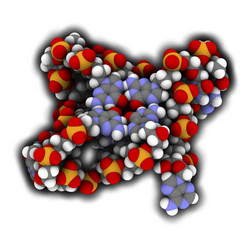The secrets of heterochromatin
Associated with the formation of centromeres and telomeres, heterochromatin is linked with the proper segregation of genetic material during cell division. Heterochromatin structure is also implicated in gene expression. Despite its importance in cellular genetic control, the formation of this material is poorly understood. The HETCHROMPROJECT (Study of the determinants of heterochromatin formation and maintenance) project has determined key molecular mechanisms that control heterochromatin formation. One major player is ARS-binding protein 1 (ABP1). The researchers used the yeast Schizosaccharomyces pombe, an ideal system, as many of its genetic control pathways have been preserved through evolution and appear in mammals. Project researchers found that ABP1 can repress the transcription of small RNAs. Other genes were identified that have a role to play in switching small RNA transcription on and off. Specifically, small RNA is derepressed in the absence of clr3 histone deacetylase gene and the hip3 HIRA complex gene. These two genes code for products that are involved in gene silencing through regulation of the chromatin structure. Further work using a tagging method identified purified proteins that operate in tandem with the ABP1 protein. Deletion of ABP1 resulted in an enlarged nucleolus, the body that organises chromatin. HETCHROMPROJECT researchers also investigated the role of novel proteins involved in heterochromatin regulation. A two-step genetic screen identified 83 deletion strains that are ideal for studying alterations in heterochromatin structure in the centromere. Some of these genes are related directly to heterochromatin structure and others implicate new pathways and widen the research potential. Heterochromatin is important for preserving chromosome segregation during cell division and maintaining genomic integrity. Results have provided new insight into the prevention of unwanted transcription by regulating chromatin structure. Applications may also include new therapeutics for diseases caused by changes in heterochromatin that impair normal gene expression.







